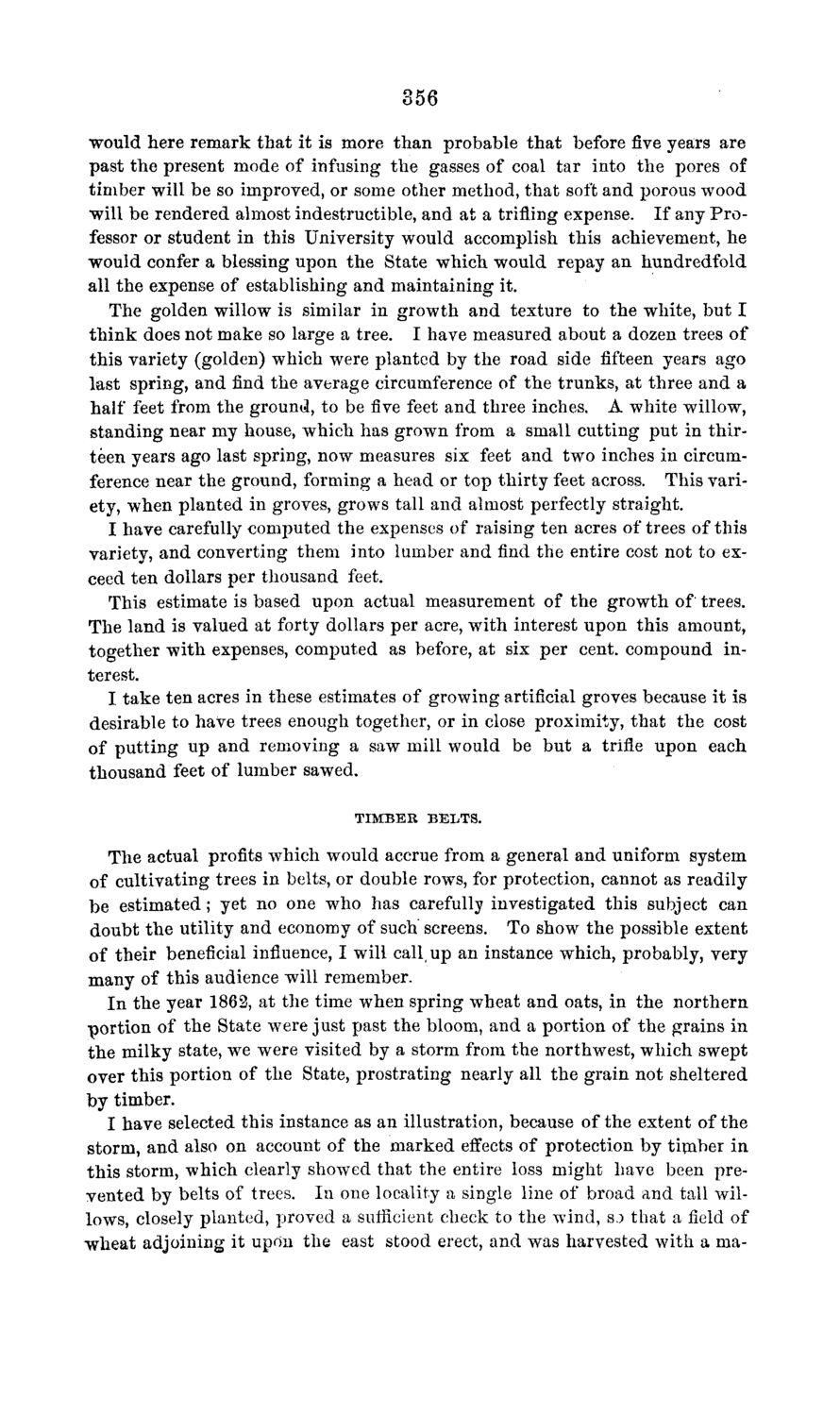| |
| |
Caption: Board of Trustees Minutes - 1869
This is a reduced-resolution page image for fast online browsing.

EXTRACTED TEXT FROM PAGE:
356 would here remark that it is more than probable that before five years are past the present mode of infusing the gasses of coal tar into the pores of timber will be so improved, or some other method, that soft and porous wood will be rendered almost indestructible, and at a trifling expense. If any Professor or student in this University would accomplish this achievement, he would confer a blessing upon the State which would repay an hundredfold all the expense of establishing and maintaining it. The golden willow is similar in growth and texture to the white, but I think does not make so large a tree. I have measured about a dozen trees of this variety (golden) which were planted by the road side fifteen years ago last spring, and find the average circumference of the trunks, at three and a half feet from the ground, to be five feet and three inches. A white willow, standing near my house, which has grown from a small cutting put in thirteen years ago last spring, now measures six feet and two inches in circumference near the ground, forming a head or top thirty feet across. This variety, when planted in groves, grows tall and almost perfectly straight. I have carefully computed the expenses of raising ten acres of trees of this variety, and converting them into lumber and find the entire cost not to exceed ten dollars per thousand feet. This estimate is based upon actual measurement of the growth of trees. The land is valued at forty dollars per acre, with interest upon this amount, together with expenses, computed as before, at six per cent, compound interest. I take ten acres in these estimates of growing artificial groves because it is desirable to have trees enough together, or in close proximity, that the cost of putting up and removing a saw mill would be but a trifle upon each thousand feet of lumber sawed. TIMBER BELTS. The actual profits which would accrue from a general and uniform system of cultivating trees in belts, or double rows, for protection, cannot as readily be estimated; yet no one who has carefully investigated this subject can doubt the utility and economy of such screens. To show the possible extent of their beneficial influence, I will call, up an instance which, probably, very many of this audience will remember. In the year 1862, at the time when spring wheat and oats, in the northern portion of the State were just past the bloom, and a portion of the grains in the milky state, we were visited by a storm from the northwest, which swept over this portion of the State, prostrating nearly all the grain not sheltered by timber. I have selected this instance as an illustration, because of the extent of the storm, and also on account of the marked effects of protection by tinaber in this storm, which clearly showed that the entire loss might have been prevented by belts of trees. In one locality a single line of broad and tall willows, closely planted, proved a sufficient check to the wind, s:> that a field of wheat adjoining it upon the east stood erect, and was harvested with a ma-
| |